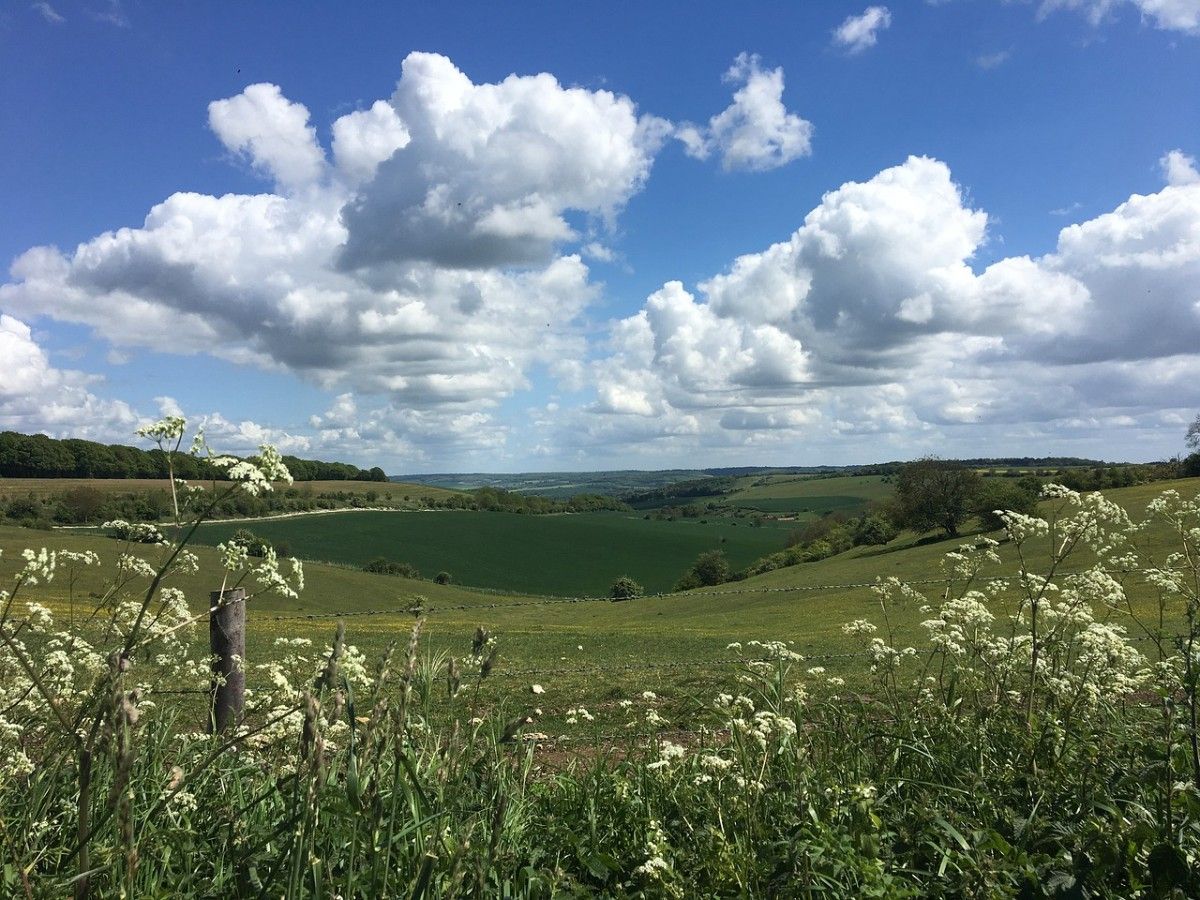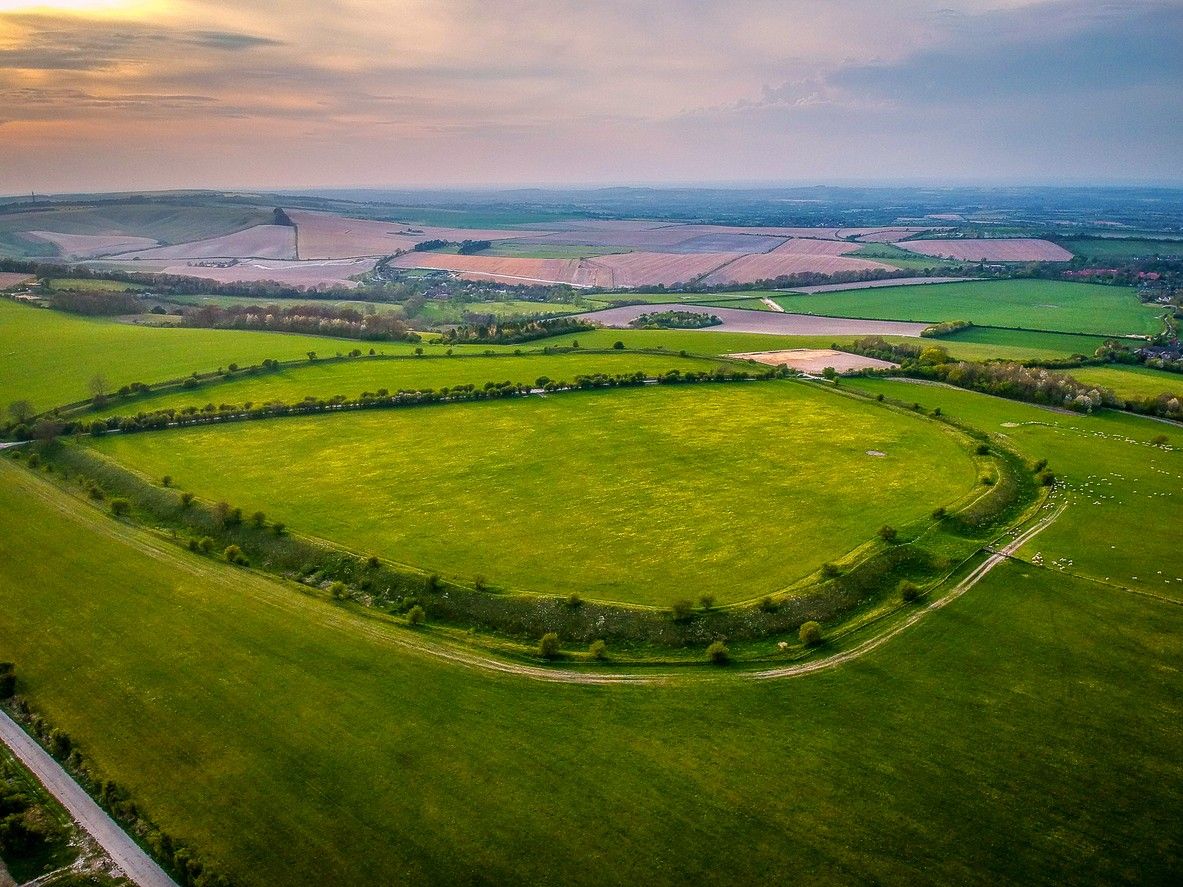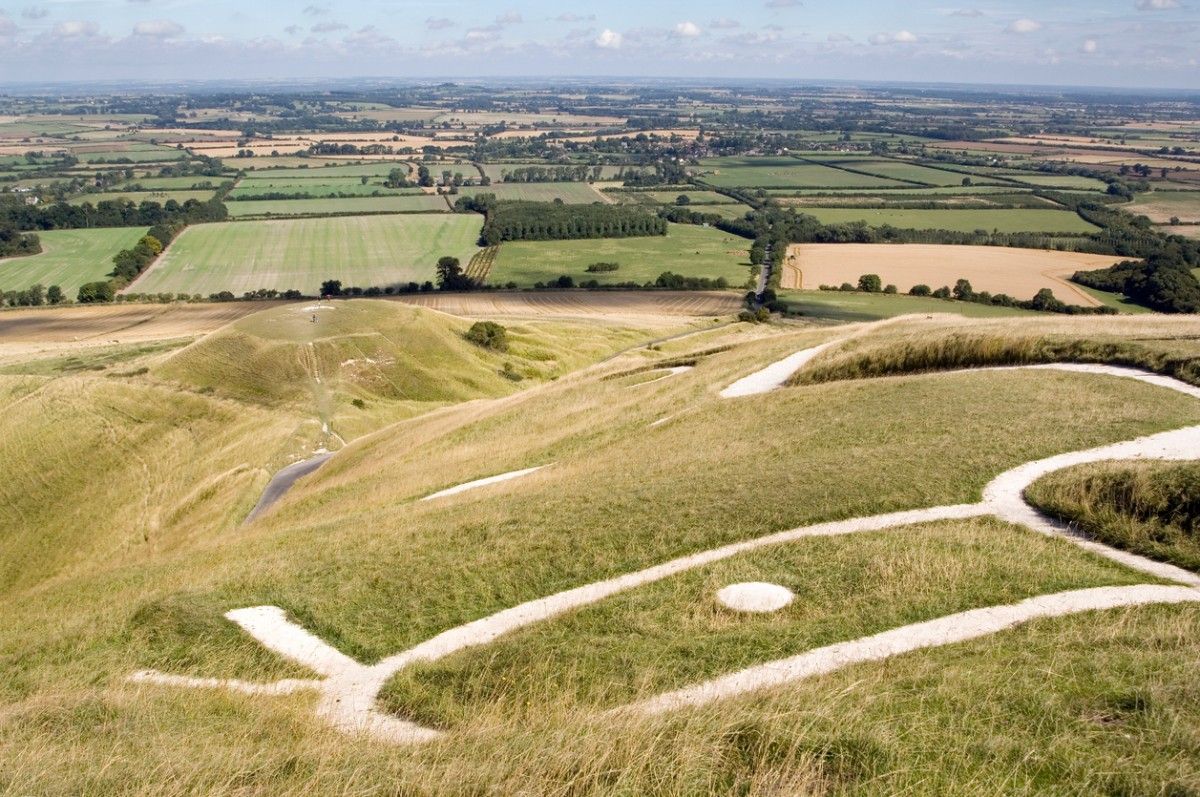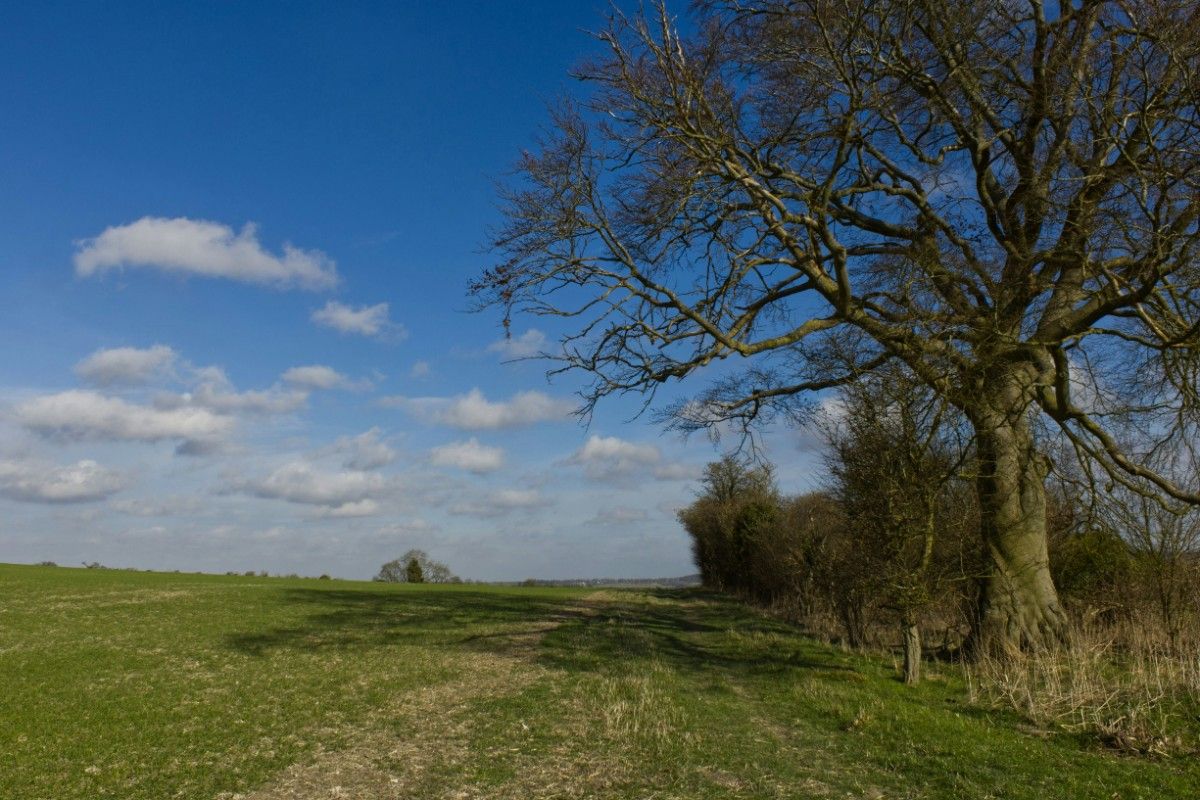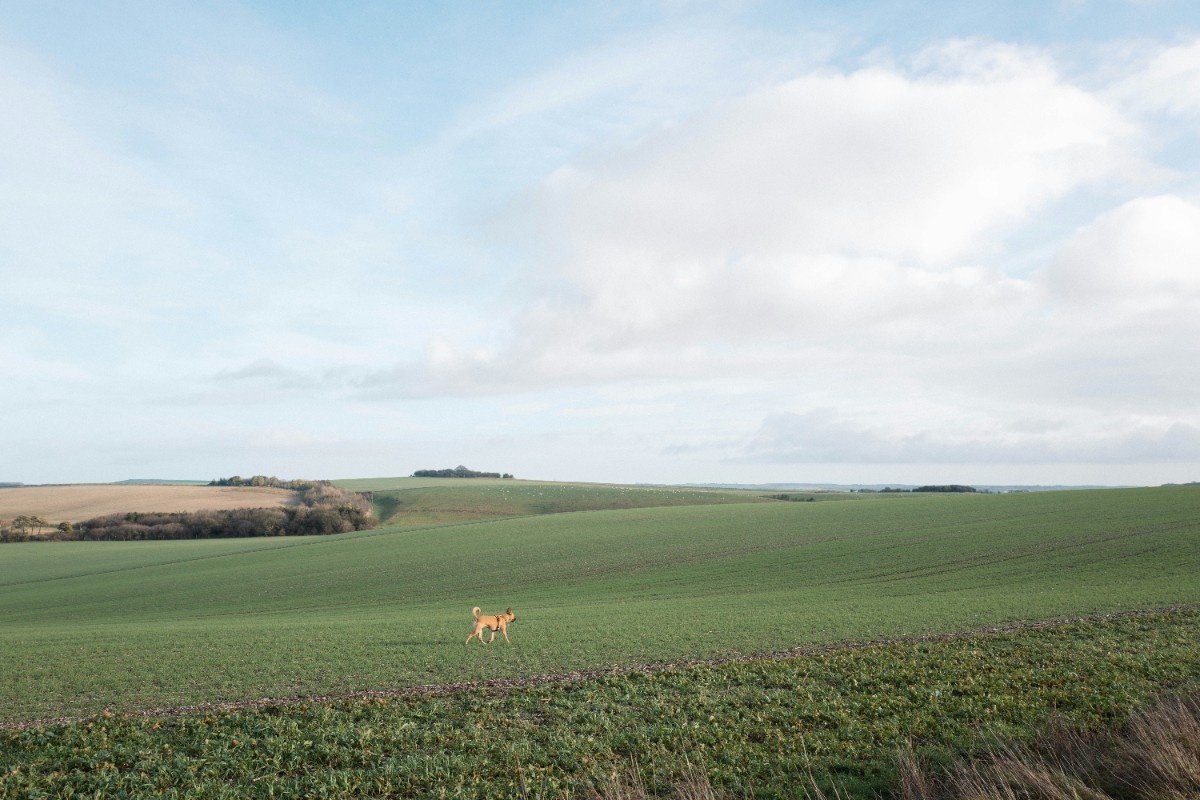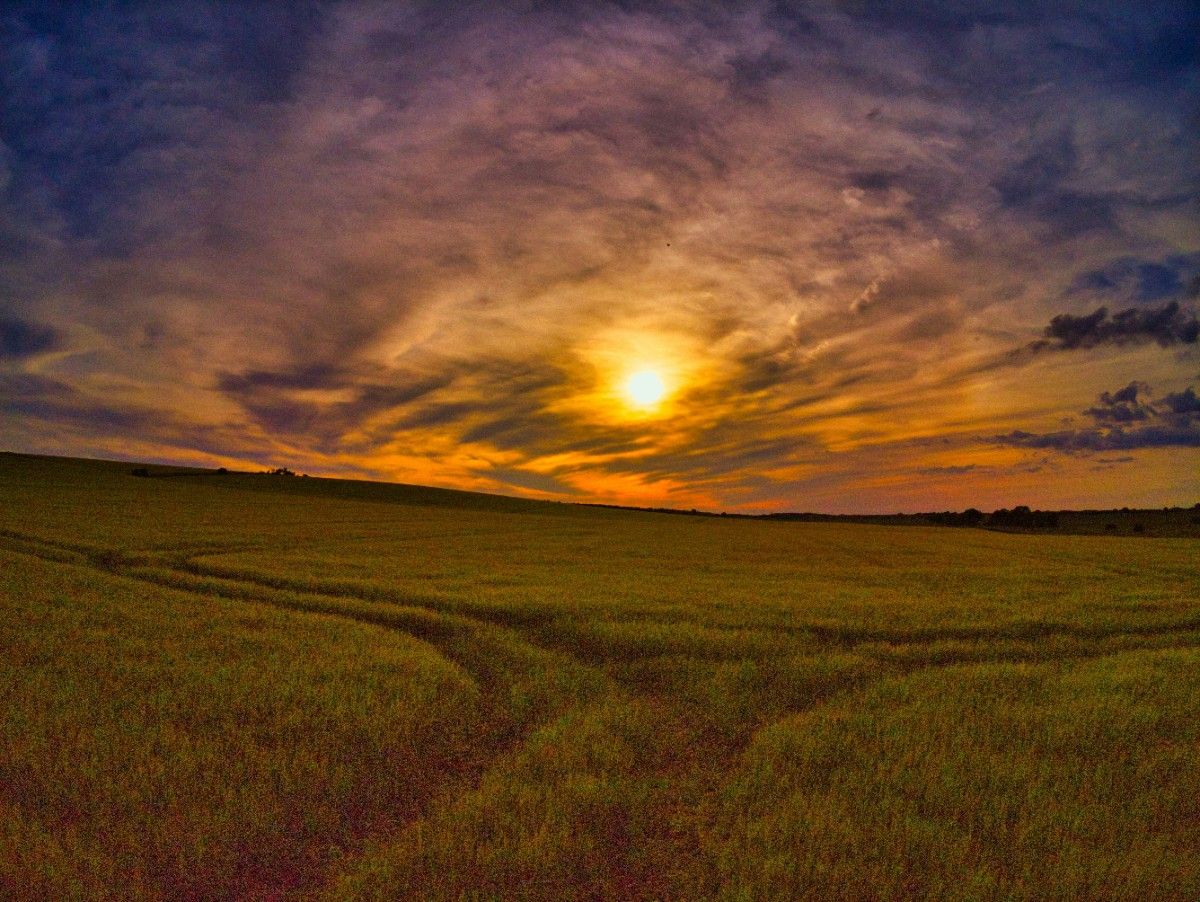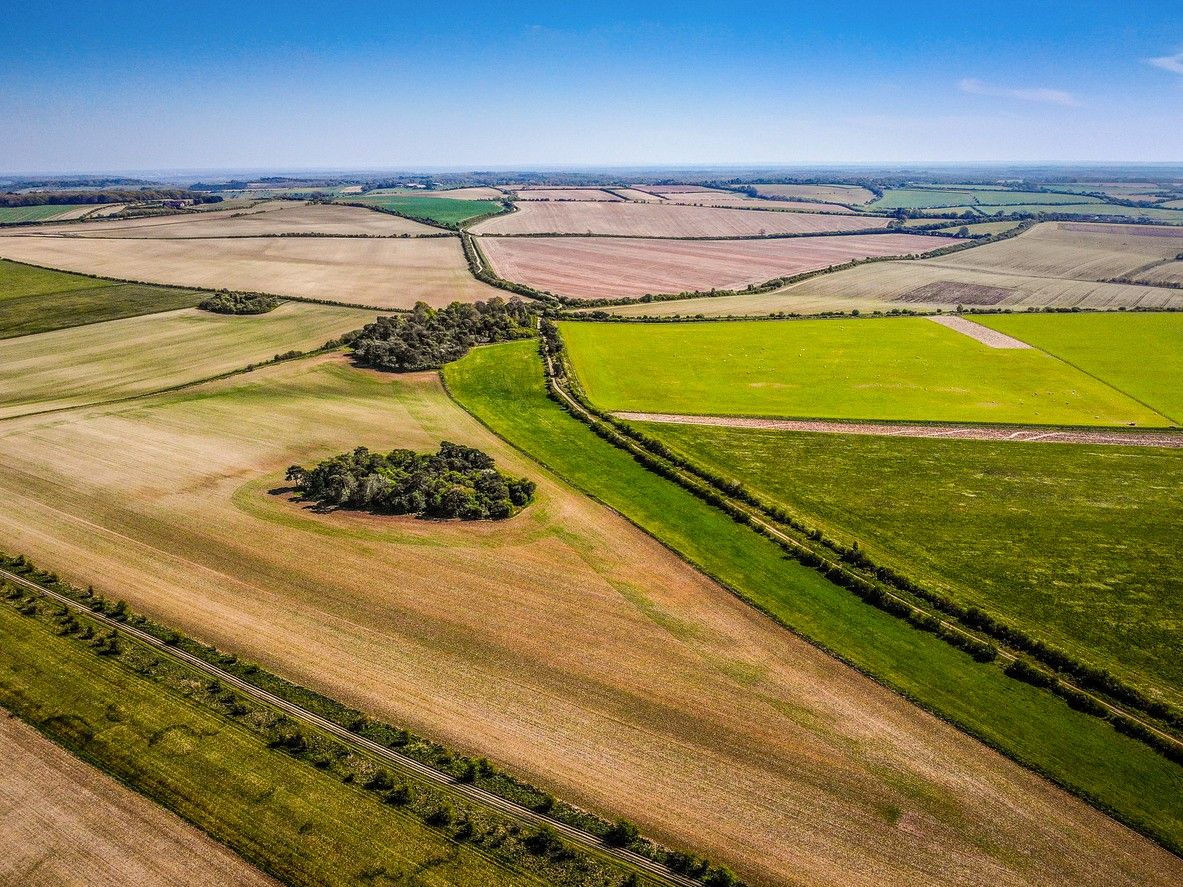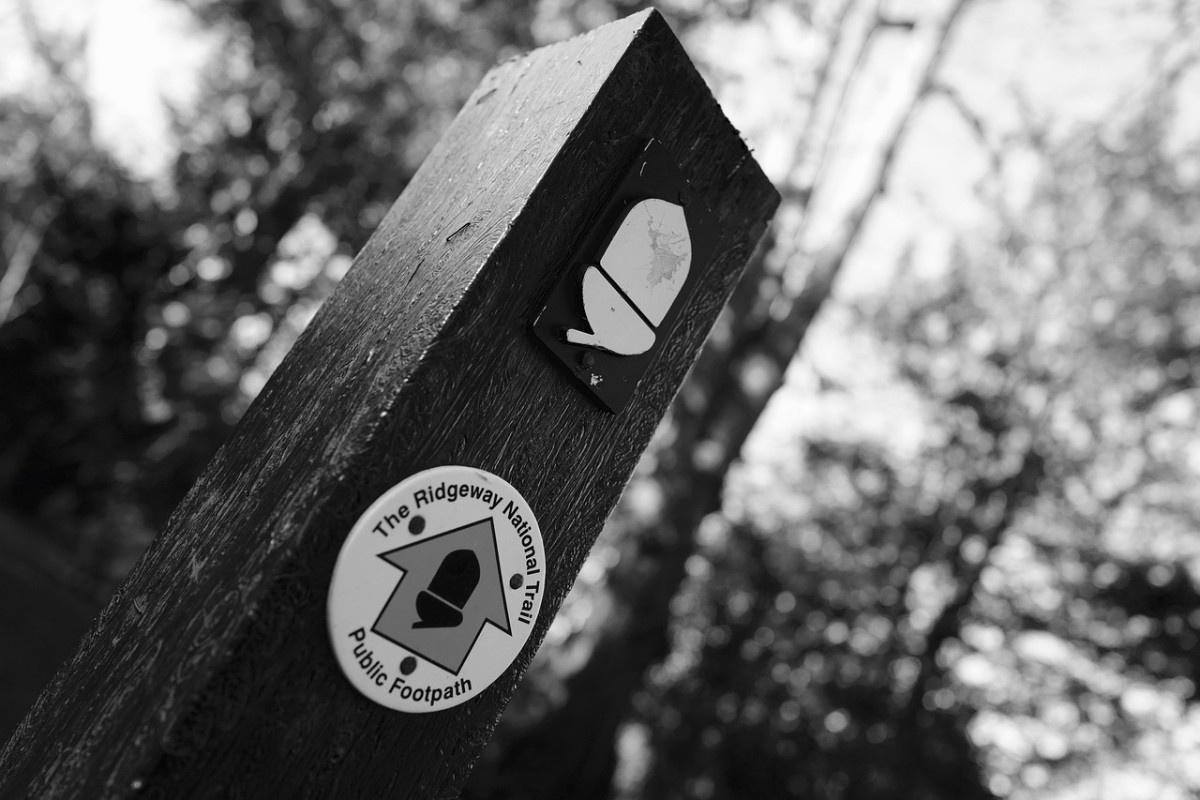Discovering the Ridgeway National Trail
The Allure of the Ancient Path
Nestled in the heart of England lies a captivating 87-mile (139 km) trail known as the Ridgeway. This ancient path, once traversed by prehistoric travellers, Roman soldiers, and medieval pilgrims, now beckons modern adventurers seeking to immerse themselves in the country's rich history and stunning landscapes. The Ridgeway national trail, officially recognised in 1972, spans from Overton Hill near Avebury in Wiltshire to Ivinghoe Beacon in Buckinghamshire. As you embark on this journey, you'll find yourself walking in the footsteps of our ancestors, experiencing the very essence of England's countryside.
The Ridgeway's allure lies not only in its historical significance but also in its diverse and breathtaking scenery. From the rolling chalk hills of the North Wessex Downs to the picturesque Chiltern Hills, the Ridgeway walk offers a visual feast for the senses. The path meanders through ancient woodlands, expansive grasslands, and charming villages, each with its own unique character and charm. Whether you're a seasoned hiker or a casual walker, the Ridgeway trail provides an accessible and rewarding outdoor experience suitable for all skill levels.
Planning Your Journey
As you plan your Ridgeway walk, you'll find an abundance of resources available to guide you along the way. Detailed maps of the Ridgeway, such as those produced by Ordnance Survey and Harvey Maps, provide invaluable information on the trail's route, elevation, and points of interest. Additionally, numerous guidebooks and online resources offer insights into the Ridgeway trail map, history, wildlife, and recommended itineraries, ensuring that you make the most of your Ridgeway adventure.
One of the most appealing aspects of the Ridgeway, England is its accessibility. With numerous Ridgeway car parks and public transportation options along the route, it's easy to plan a day hike or a multi-day expedition. The trail is well-marked with signposts bearing the distinctive acorn symbol, guiding you along the Ridgeway path and ensuring that you stay on course. Whether you choose to tackle the entire 87-mile trail or explore smaller sections, the Ridgeway offers a truly immersive and unforgettable experience in the heart of England.
Unravelling the History of the Ridgeway
Prehistoric Beginnings
The Ridgeway's story begins in the mists of prehistory, with evidence suggesting that the trail has been in use for over 5,000 years. The earliest travellers along the Ridgeway were Neolithic traders, who used the high ground to navigate through the landscape and transport goods such as flint and pottery. The elevated position of the trail provided a clear view of the surrounding countryside, making it an ideal route for both trade and defence.
As civilisations rose and fell, the Ridgeway continued to play a significant role in England's history. During the Iron Age, hill forts were constructed along the trail, serving as strategic strongholds and centres of power. The most notable of these is Uffington Castle, an impressive fortification that offers breathtaking views of the Vale of the White Horse. The castle's proximity to the enigmatic Uffington White Horse, a stylised prehistoric chalk figure carved into the hillside, adds to the mystique and allure of the area.
Roman Influence and Beyond
The Romans, too, left their mark on the Ridgeway. As they expanded their empire across Britain, they recognised the strategic importance of the trail and constructed roads along its route. The Roman road known as the Icknield Way follows the Ridgeway for much of its length, testament to the enduring influence of these ancient engineers. Today, remnants of Roman settlements and villas can be found along the trail, offering a glimpse into the lives of those who once called this land home.
In the centuries that followed, the Ridgeway continued to serve as a vital thoroughfare. During the medieval period, pilgrims would have used the trail to reach holy sites such as the Abbey of St Albans and the shrine of St Frideswide in Oxford. The trail also served as a drove road, with farmers using it to move livestock from one market to another. The legacy of these pastoral journeys can still be seen in the broad, grassy tracks that characterise much of the Ridgeway today.
A Living Museum
As you walk the Ridgeway, you'll encounter numerous historical sites and monuments that bear witness to the trail's rich past. From Neolithic long barrows and Bronze Age round barrows to Iron Age hill forts and Roman ruins, the Ridgeway is a living museum of England's history. By immersing yourself in this ancient landscape, you'll gain a deeper appreciation for the generations of travellers who have walked this path before you, each leaving their own indelible mark on the Ridgeway's enduring story.
Exploring the Ridgeway's Natural Wonders
A Tapestry of Landscapes
The Ridgeway's appeal extends far beyond its historical significance. The trail traverses some of England's most stunning and diverse landscapes, offering a wealth of natural wonders to discover and enjoy. From the sweeping vistas of the chalk downs to the tranquil woodlands and wildflower meadows, the Ridgeway is a haven for nature enthusiasts and outdoor adventurers alike.
One of the most iconic features of the Ridgeway is the chalk grassland that covers much of the trail's route. These unique habitats, formed by the underlying chalk geology, are home to a rich variety of flora and fauna. In the spring and summer months, the downs come alive with a vibrant display of wildflowers, including orchids, cowslips, and oxeye daisies. The short, nutrient-poor grass also supports a diverse array of insects, including rare species of butterflies and moths.
Woodlands and Wildlife
As you walk the Ridgeway, you'll also encounter numerous woods and copses, each with its own distinct character. The ancient woodlands of the Chilterns, for example, are renowned for their stunning displays of bluebells in the spring. These enchanting forests are also home to a wide variety of bird life, including the elusive and melodious nightingale. Keep your eyes peeled for the majestic red kite, a once-endangered species that has made a remarkable comeback in recent years and can now be seen soaring above the Ridgeway's skies.
The Ridgeway also passes through several Areas of Outstanding Natural Beauty (AONBs), including the North Wessex Downs and the Chilterns. These protected landscapes are recognised for their exceptional beauty, tranquillity, and biodiversity. As you traverse these areas, you'll have the opportunity to experience some of England's most breathtaking views, from the panoramic vistas of the Marlborough Downs to the rolling hills and valleys of the Chilterns.
In addition to its scenic beauty, the Ridgeway also offers numerous opportunities for wildlife spotting. The trail is home to a diverse array of mammals, including badgers, foxes, and roe deer. Birdwatchers will delight in the variety of species that can be seen along the route, from the common chaffinch and blackbird to the more elusive green woodpecker and peregrine falcon. The Ridgeway's ponds and streams also support a thriving population of amphibians, including frogs, toads, and newts.
Planning Your Ridgeway Walk
Choosing Your Route
Embarking on a Ridgeway walk is an exciting and rewarding experience, but it does require some careful planning and preparation. Whether you're a seasoned hiker or a casual walker, there are several key factors to consider when organising your Ridgeway adventure.
First and foremost, you'll need to decide on the length and duration of your walk. The Ridgeway national trail spans 87 miles (139 km) from Overton Hill to Ivinghoe Beacon, and most walkers choose to complete the trail over the course of 5-8 days. However, the Ridgeway also lends itself well to shorter day hikes and weekend excursions, allowing you to explore specific sections of the trail at your own pace.
Essential Gear and Navigation
Once you've determined your route and itinerary, it's essential to familiarise yourself with the trail's terrain and conditions. The Ridgeway is generally well-maintained and easy to navigate, but some sections can be muddy or uneven, particularly after heavy rain. Sturdy walking boots with good ankle support are a must, as are comfortable and moisture-wicking clothing layers. Don't forget to pack a waterproof jacket and trousers, as well as a hat and sunscreen for protection against the elements.
Navigation is another crucial aspect of planning your Ridgeway walk. While the trail is well-signposted with the distinctive acorn symbol, it's always a good idea to carry a detailed map of the Ridgeway and compass, as well as a GPS device or smartphone app for backup. The Ordnance Survey Explorer series maps of the Ridgeway (1:25,000 scale) cover the entire Ridgeway route, providing comprehensive information on the trail's topography, points of interest, and amenities.
Accommodation and Sustenance
Accommodation is another important consideration when planning your Ridgeway walk. The trail passes through numerous towns and villages, offering a range of lodging options from cosy bed and breakfasts to self-catering cottages and campsites. Many walkers choose to book their accommodation in advance, particularly during peak season, to ensure a comfortable and stress-free journey. Alternatively, for a more immersive experience, you may opt to camp on the Ridgeway, taking advantage of the numerous campsites and wild camping spots available.
Food and water are essential components of any successful Ridgeway walk. While the trail passes through several towns and villages with Ridgeway pubs, cafes, and shops, it's always a good idea to carry some snacks and a refillable water bottle. Some sections of the trail can be remote, so it's important to plan ahead and stock up on supplies when the opportunity arises. Many walkers also choose to pack a lightweight stove and cooking equipment, allowing them to prepare their own meals and enjoy a hot drink at the end of a long day's walk.
Highlights and Points of Interest Along the Ridgeway
Ancient Wonders and Historic Sites
As you traverse the Ridgeway national trail, you'll encounter a wealth of fascinating points of interest and stunning natural highlights. From ancient monuments and historical sites to charming villages and breathtaking vistas, the Ridgeway offers a truly immersive and engaging experience for walkers of all interests and backgrounds.
One of the most iconic sites along the Ridgeway is the Uffington White Horse, a stylised prehistoric chalk figure carved into the hillside near the village of Uffington. Dating back some 3,000 years, the 110-metre long figure is the oldest known chalk hill figure in Britain and a testament to the artistic and spiritual beliefs of our ancient ancestors. The nearby Uffington Castle, an Iron Age hill fort, offers breathtaking views of the surrounding countryside and a glimpse into the region's rich archaeological heritage.
As you continue along the trail, you'll pass through the picturesque market town of Wantage, birthplace of King Alfred the Great. The town's charming streets and historic buildings, including the 13th-century Church of St Peter and St Paul, offer a delightful respite from the trail and a chance to explore some of England's cultural heritage. Just outside Wantage lies the Segsbury Camp, another impressive Iron Age hill fort with commanding views of the Vale of the White Horse.
Myths, Legends, and Natural Wonders
Further along the Ridgeway, you'll encounter the mysterious Wayland's Smithy, a Neolithic long barrow and chamber tomb nestled in a tranquil beech grove. According to legend, the site was once the forge of Wayland, the Saxon god of metalworking, who would shoe the horses of passing travellers in exchange for payment. Today, the site offers a peaceful and contemplative spot to rest and reflect on the Ridgeway's ancient past.
As you enter the Chiltern Hills, you'll be greeted by a stunning landscape of rolling hills, beech woodlands, and wildflower meadows. The Chilterns are home to some of the Ridgeway's most picturesque villages, including the charming hamlet of Wendover with its thatched cottages and historic Ridgeway pubs. The nearby Coombe Hill, the highest point in the Chilterns, offers panoramic views of the surrounding countryside and a chance to spot red kites soaring overhead.
Towards the end of the Ridgeway, you'll pass through the historic town of Ivinghoe, home to the 12th-century Church of St Mary and the remains of a Norman motte-and-bailey castle. The trail culminates at the impressive Ivinghoe Beacon, a prominent hill and nature reserve that offers stunning views of the Vale of Aylesbury and beyond. The beacon has a long history as a signalling point, with evidence of use dating back to the Bronze Age.
Experiencing the Ridgeway's Charming Villages and Pubs
Quaint Villages and Local Culture
One of the great pleasures of walking the Ridgeway is the opportunity to explore the charming villages and cosy Ridgeway pubs that line the route. These quaint settlements offer a warm welcome to weary walkers, providing a chance to rest, refuel, and immerse oneself in the local culture and hospitality.
As you make your way along the Ridgeway, you'll pass through numerous picturesque villages, each with its own unique character and charm. The village of Ogbourne St George, for example, boasts a delightful mix of thatched cottages, historic buildings, and a 12th-century church dedicated to Saint George.
Further along the trail, the village of Goring-on-Thames provides a picture-perfect spot to rest and recharge. With its quaint high street, independent shops, and charming Ridgeway pubs, Goring is a popular stop for Ridgeway walkers. The Catherine Wheel, a 16th-century coaching inn, offers comfortable accommodation, delicious food, and a cosy bar area perfect for swapping tales of the trail with fellow walkers.
Traditional Pubs and Local Fare
As you enter the Chiltern Hills, you'll encounter the delightful village of Wendover, known for its historic market square, half-timbered buildings, and excellent Ridgeway pubs. The George & Dragon offers a contemporary dining experience with a focus on seasonal, locally-sourced ingredients.
Toward the end of the Ridgeway, the village of Wigginton provides a charming and peaceful spot to rest and reflect on your journey. The Greyhound Inn, a traditional 17th-century pub, offers comfortable rooms, a delightful beer garden, and a menu of classic pub favourites made with locally-sourced produce. The nearby village of Ivinghoe, with its historic church and picturesque cottages, also offers a range of Ridgeway pubs and tearooms to enjoy.
In addition to these larger villages, the Ridgeway also passes through numerous smaller hamlets and settlements, each with its own unique character and charm. Many of these villages have a rich history dating back centuries, with ancient churches, traditional cottages, and historic ruins to explore. By taking the time to wander through these villages and chat with locals, you'll gain a deeper appreciation for the Ridgeway's enduring role in shaping the culture and communities of the region.
The Ridgeway for Cyclists and Equestrians
Cycling Adventures on the Ridgeway
While the Ridgeway is primarily known as a walking trail, it also offers excellent opportunities for cycling and horseback riding. The trail's varied terrain, stunning scenery, and rich history make it a popular choice for riders of all skill levels and interests.
For cyclists, the Ridgeway provides a challenging and rewarding route through some of England's most beautiful countryside. The trail's mix of ancient trackways, bridleways, and byways offers a range of surfaces to suit different riding styles and preferences. While some sections of the trail can be rough and muddy, particularly after heavy rain, the majority of the route is well-maintained and suitable for both mountain bikes and hybrid bikes.
One of the most popular cycling the Ridgeway routes is the western section from Overton Hill to Goring-on-Thames. This 43-mile (69 km) stretch takes riders through the heart of the North Wessex Downs Area of Outstanding Natural Beauty, offering stunning views of the surrounding countryside and numerous historical sites to explore. The route passes through several charming villages, including Ogbourne St George and Sparsholt, providing ample opportunities to stop for refreshments and take in the local culture.
For those seeking a longer cycling adventure, the eastern section of the Ridgeway from Goring-on-Thames to Ivinghoe Beacon offers an additional 44 miles (71 km) of stunning riding. This stretch takes cyclists on the Ridgeway through the picturesque Chiltern Hills, with numerous steep climbs and descents to test even the fittest of riders. The route passes through several charming villages, including Watlington and Wendover, and offers breathtaking views of the surrounding countryside from the top of Coombe Hill and Ivinghoe Beacon.
Horseback Riding on the Ancient Trail
Equestrians, too, will find much to enjoy along the Ridgeway. The trail's ancient trackways and bridleways offer excellent riding opportunities, with stunning views of the surrounding countryside and numerous historical sites to explore. The western section of the trail, in particular, is popular with horseback riders, with several riding centres and stables located along the route.
One of the highlights of the Ridgeway for equestrians is the opportunity to ride through the stunning landscapes of the North Wessex Downs and the Chiltern Hills. The trail's varied terrain, from gentle hills to steep inclines, offers a range of challenges for riders of all skill levels. The numerous villages and Ridgeway pubs along the route also provide ample opportunities to stop for refreshments and give both horse and rider a well-earned break.
When cycling the Ridgeway or riding along the trail, it's important to remember to follow the countryside code and respect other trail users. Cyclists should give way to walkers and horse riders, while equestrians should take care to avoid damaging the trail's surface and disturbing local wildlife. By working together and sharing the trail responsibly, cyclists, equestrians, and walkers can all enjoy the beauty and history of the Ridgeway for generations to come.
Preserving the Ridgeway for Future Generations
Combating Erosion and Maintaining the Trail
As one of England's most ancient and beloved trails, the Ridgeway holds a special place in the hearts of countless walkers, cyclists, and equestrians. However, with increasing numbers of visitors each year, it's more important than ever to ensure that the trail is preserved and protected for future generations to enjoy.
One of the key challenges facing the Ridgeway is erosion caused by heavy use and poor weather conditions. The trail's chalky soils are particularly vulnerable to damage from heavy footfall and bicycle tires, leading to the formation of ruts, gullies, and other erosional features. To combat this, the National Trail authorities and local conservation groups work tirelessly to maintain and repair the trail's surface, installing drainage features and reinforcing heavily trafficked areas with stone and gravel.
Another important aspect of preserving the Ridgeway is protecting its rich biodiversity and unique habitats. The trail passes through several Sites of Special Scientific Interest (SSSIs) and nature reserves, home to a wide range of rare and endangered species. By working with local landowners, conservation groups, and government agencies, the National Trail authorities aim to promote sustainable land management practices and reduce the impact of human activities on these fragile ecosystems.
Promoting Responsible Use and Stewardship
Education and outreach also play a vital role in preserving the Ridgeway for future generations. By engaging with local communities, schools, and visitor groups, the National Trail authorities aim to raise awareness of the trail's importance and promote responsible use and stewardship. This includes encouraging visitors to follow the countryside code, respect local wildlife and habitats, and take steps to minimise their impact on the trail's surface and surrounding landscape.
In addition to these efforts, the National Trail authorities also work closely with local businesses, tourism providers, and transportation agencies to promote sustainable access to the Ridgeway. This includes developing and maintaining a network of public transportation links, Ridgeway car parks, and cycle routes on the Ridgeway, as well as promoting the use of local accommodation, food, and drink providers. By supporting the local economy and reducing the environmental impact of visitor travel, these initiatives help to ensure that the Ridgeway remains a vital and sustainable resource for generations to come.
A Shared Responsibility
Ultimately, the preservation of the Ridgeway is a shared responsibility that requires the active participation and support of all those who use and value the trail. Whether you're a regular Ridgeway walker, a keen cyclist, or an occasional visitor, there are many ways to get involved and make a positive contribution to the trail's future. This might include volunteering for local conservation projects, supporting local businesses and tourism providers, or simply spreading the word about the importance of responsible trail use and stewardship.
By working together to protect and preserve the Ridgeway, we can ensure that this ancient and beloved trail remains a vital part of England's natural and cultural heritage for generations to come. Whether you're drawn to the trail's stunning scenery, rich history, or unique biodiversity, the Ridgeway offers a truly unforgettable experience that is well worth protecting and cherishing.
Related Articles

Let us know you agree to cookies
We use marketing, analytical and functional cookies as well as similar technologies to give you the best experience. Third parties, including social media platforms, often place tracking cookies on our site to show you personalised adverts outside of our website.
We store your cookie preferences for two years and you can edit your preferences via ‘manage cookies’ or through the cookie policy at the bottom of every page. For more information, please see our cookie policy.
